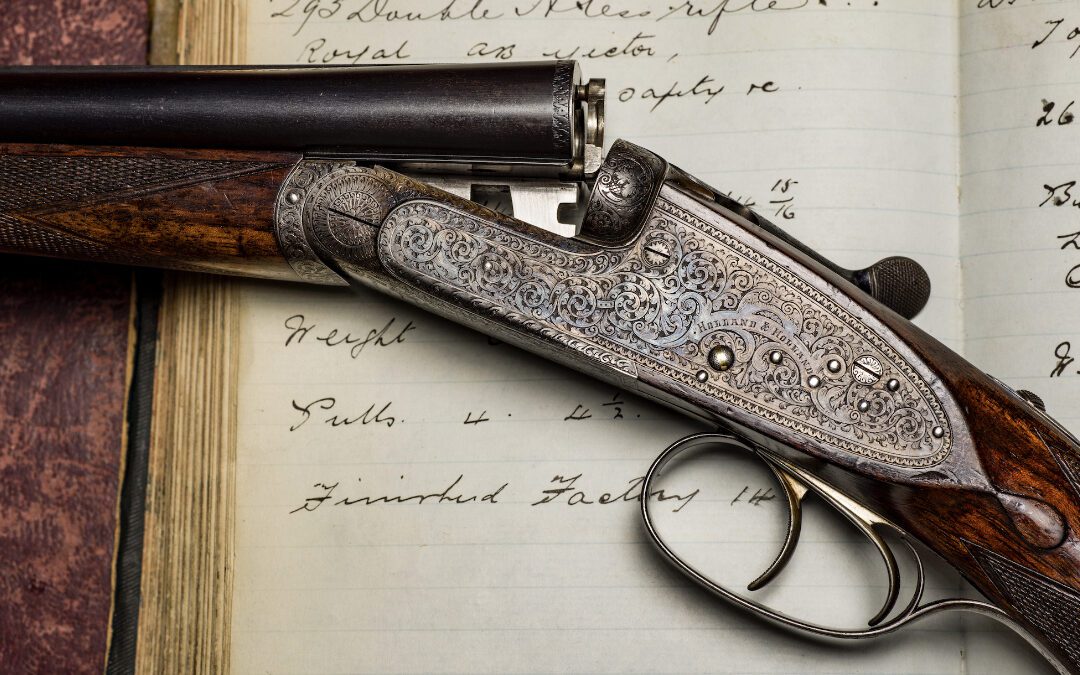Holland & Holland, long respected for producing firearms of the highest quality, was acquired in 2021 by the Beretta Holding Group from the French perfume company, Chanel. For three decades, the French company tried to redefine and reinvent the venerable old gun company into a fashion-focused entity with questionable success. Quoting one of Chanel’s directors, the French fashion giant tried to turn the English company into “the Ralph Lauren of the shooting world.” Ultimately, it failed and sold the company to a renowned family-owned enterprise that has crafted guns for the past 500 years.
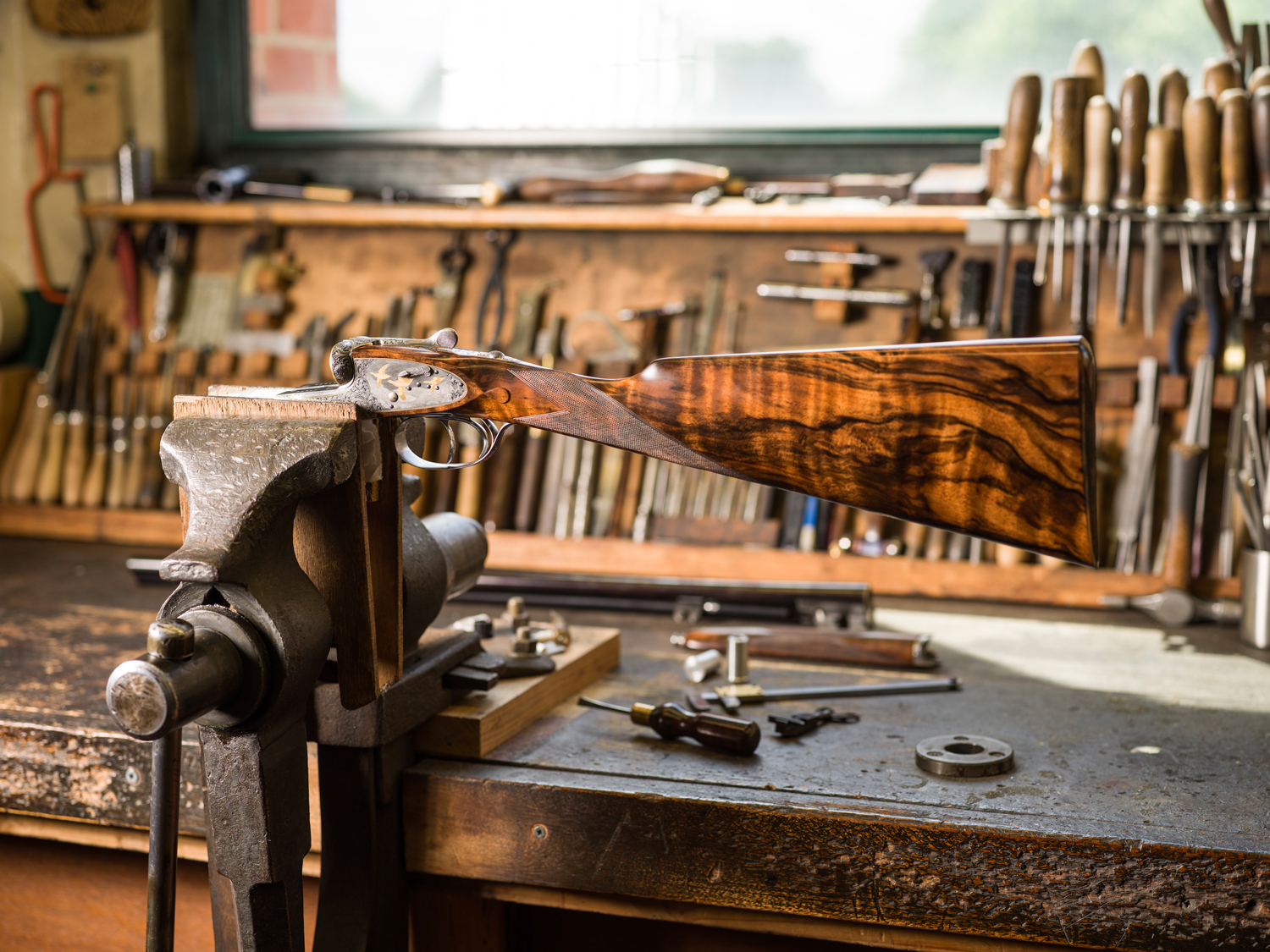
“We have admired Holland & Holland since my great grandfather, Pietro Beretta, first studied the company as early as the 1930s,” said Franco Gussalli Beretta, executive vice president of Beretta Holding. “Holland & Holland is a project that is much more complex because we absolutely want to keep the strong English identity of the brand, and which is the reason we acquired it. As far as the firearms are concerned, they are and will be completely produced in the London factory and we are reinvesting to have the products and the shop upgraded. The shooting range is also a big asset. We are also analyzing the famous Holland & Holland ammunition heritage and we will soon make some decisions about the right strategy to take.”
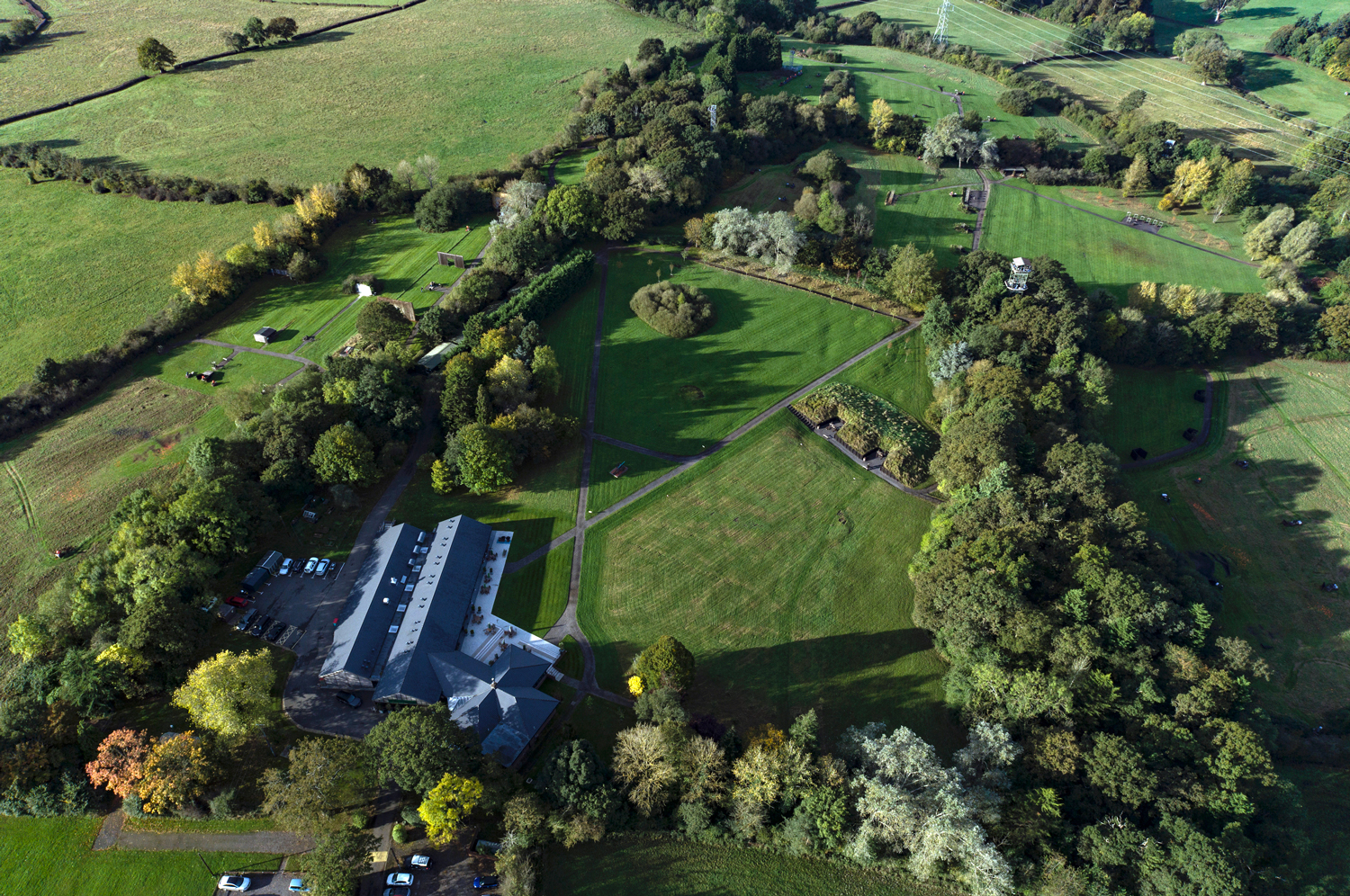
As the “Royal” gunmaker, Holland & Holland’s ties to the British monarchy go as far back as the late 1800s. Since then, the venerable gun company’s London factory has produced some of the world’s finest and most reliable sporting shotguns and rifles. Hollands’ guns are handmade by integrating both traditional and contemporary techniques. Time-honored gunmaking skills and state-of-the-art machinery mesh perfectly to instill quality and artistry into every shotgun and rifle. For many H&H owners, these are not just guns—they are pieces of art to be treasured for generations.
Long-time loyal Holland & Holland customer, William Feldstein, sums up his philosophy about the artistry and function of fine double rifles: “Most men who purchase English best double rifles do not hunt with them because of their value. I believe to the contrary. Skilled craftsmen have devoted 1,400 to 1,500 hours of their time…is it not our responsibility as a tribute to their artistry to take the rifles into the field and use them in the manner for which they were built?”
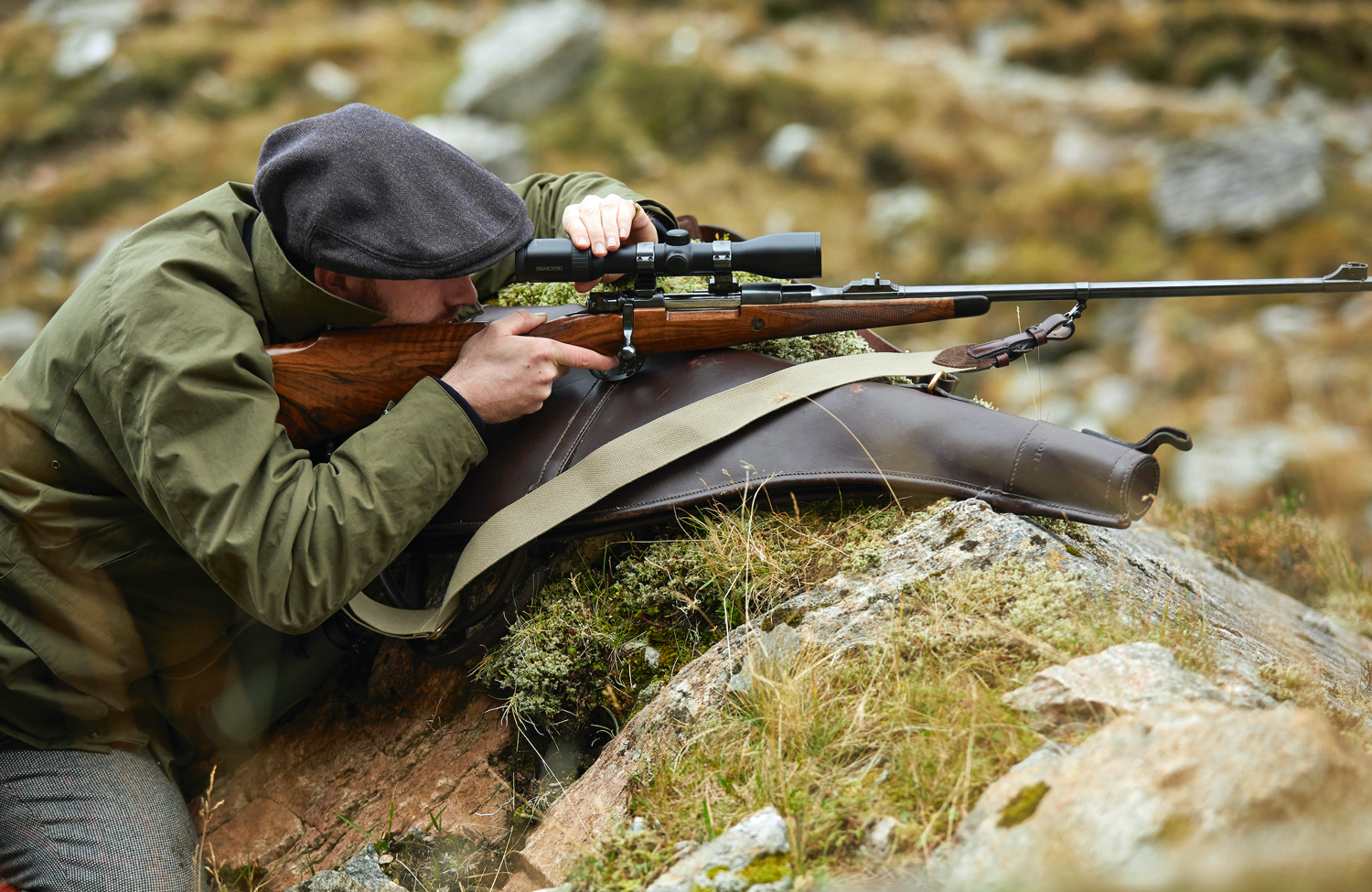
Holland & Holland’s DNA has always been that of a pure gun company—one of the best. Once a gun was ordered, H&H dedicated itself to that purpose by being masters at determining and satisfying the customer’s wants and needs. They’d say whether they could do it, how they could do it and when they could do it. The customer was involved from the first moment and the excitement of initiating a new-build was maintained throughout the process. Excellent customer relations were cultivated by maintaining personal relationships that began with a one-on-one relationship with Hollands’ “man” behind the counter.
“We have an exciting future ahead of us and this new era sees the company re-establishing itself as the very hallmark of fine English gunmaking,” said Mike Jones, H&H’s marketing manager. “We have undertaken a full strategic business review alongside an extensive brand positioning exercise to put us firmly back on track.”
More than an Impressive Cartridge
Back in the mid-1950s my father purchased a Remington Model 721 rifle chambered for a Holland & Holland caliber originally called the “Super-Thirty.” Designed in 1925 around a necked-down 375 Holland & Holland Magnum belted case, the Super-Thirty cartridge was later renamed the 300 Holland & Holland Magnum. Not only did it look impressive with its sleek, sexy, slope-shouldered profile, but it was a real performer accurately reaching out for 200 yards or more. The 30-caliber cartridge quickly gained respect around the world, accounting for game as large as a moose in North America and eland in Africa, weighing close to a ton.
The 300 H&H Magnum proved an ideal caliber for the plains game we hunted when my family moved to Kenya in the 1960s. As we gained experience and insight into the world of big game hunting, I became aware of how the name Holland & Holland—one of the oldest and most respected names in the world of gunmaking—stood for much more than just an excellent, field-proven cartridge. I discovered that most hunters dream of owning a Holland rifle and that carrying one into the field will garner respect from the world’s most knowledgeable big game hunters.
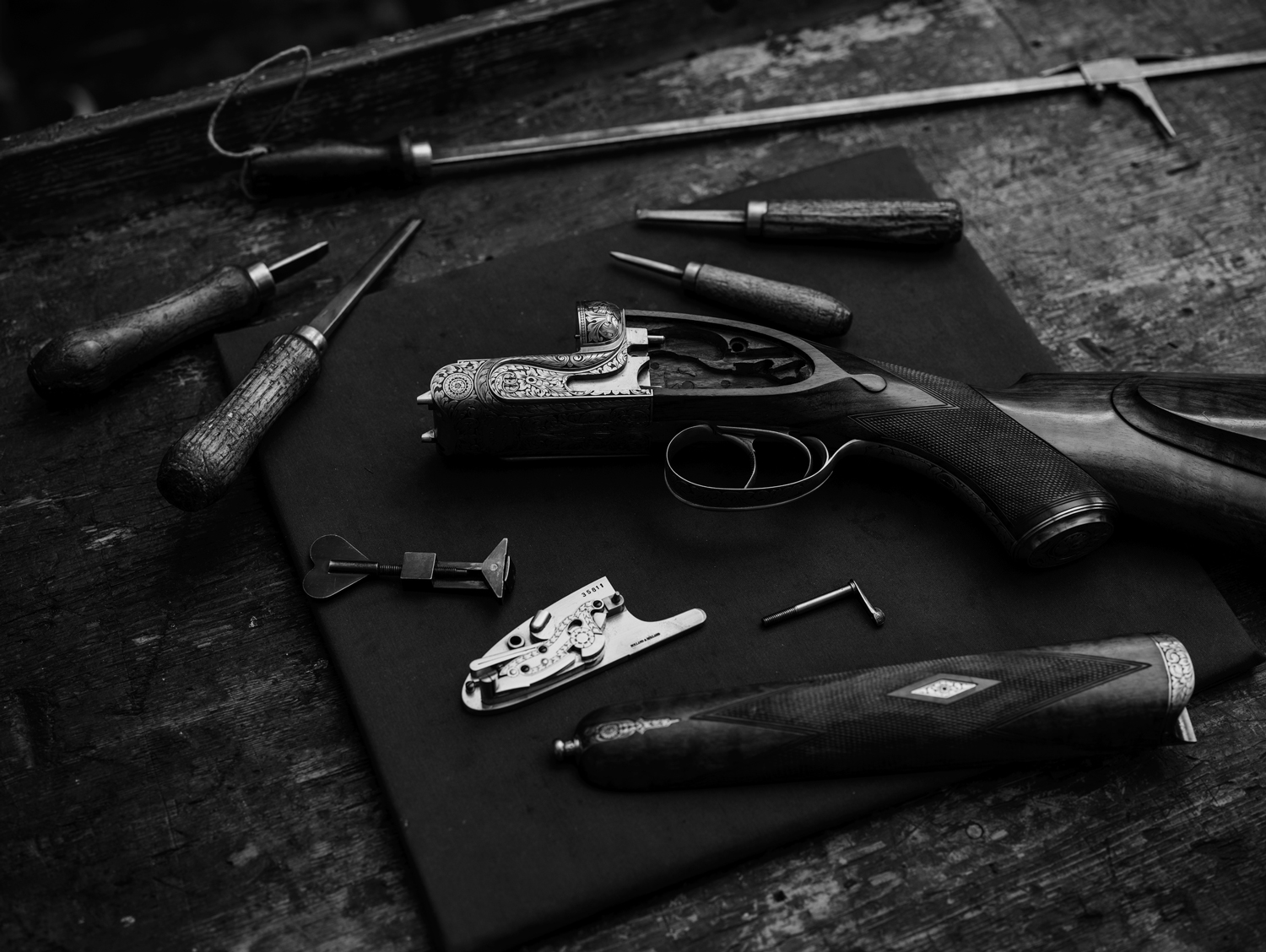
When I began work as a professional hunter in Botswana, I’ll always remember one of my early clients arriving in Maun with an exquisitely-cased Holland & Holland Royal double rifle chambered for the 500/465 Nitro Express—a classic and time-proven caliber intended for the world’s largest game. Justifiably proud of his rifle, my client beamed as he watched me open the case to admire the deeply engraved artwork and beautifully figured stock of a magnificent rifle.
Sadly, the rifle’s remarkable beauty and inherent accuracy could not overcome the client’s decided lack of range skills. His lofty, but naive opinion of the rifle’s capabilities caused him to regard it like a magic wand, merely needing to be waved in the general direction of game in order for bullets to find their own way to the target.
To acclimatize the client to African hunting and to help him establish some confidence in his Holland’s rifle, we began with some plains game but met with little success. The rifle and caliber were intended for hunting dangerous game, so it was critical that the client’s shooting improve before we tackled game that might strike back.
“But, it’s a Holland & Holland; how can it miss?” he appealed to me.
“The rifle isn’t missing—you are!” I pointed out, with little political politeness, “You’ve got to hold the rifle steady, squeeze the trigger without yanking it, and keep your eyes open!”
Back at camp I initiated some much-needed shooting drills—the kind that should have been done well in advance of the safari. Bringing the client out of his slump was a challenge and the effort consumed valuable time that should have been spent hunting. My constant and repeated reminders for him to firmly hold the rifle to point-of-aim and squeeze the trigger eventually tightened the groups and edged his shots closer to the bull’s-eye. Fortunately, he brought plenty of ammo.
When he finally twigged to the teamwork it takes between rifle and shooter, his shooting improved sufficiently to resume the hunt. Finally, at one with his Holland & Holland Royal De Luxe 500/465 double rifle, the client eventually downed a very fine tusker with a brain shot.
At the Beginning
While the company’s background is not perfectly clear, it is known that, prior to Harris Holland’s involvement with gunmaking, he owned a lucrative tobacco wholesale business in London. He was also an enthusiastic and capable shooter who frequently participated in pigeon shoots at important London clubs and leased an expensive grouse moor in Yorkshire.
As an accomplished shooter, his friends encouraged Holland to start his own gunmaking business, which he did around 1835. But, being somewhat impetuous and unorthodox, Harris completely skipped the all-important apprenticeship training. London Best makers such as Boss, Lang and Lancaster had all served apprenticeships with Joseph Manton, while others such as Beesley, Grant and Atkin apprenticed under Purdey or Boss.
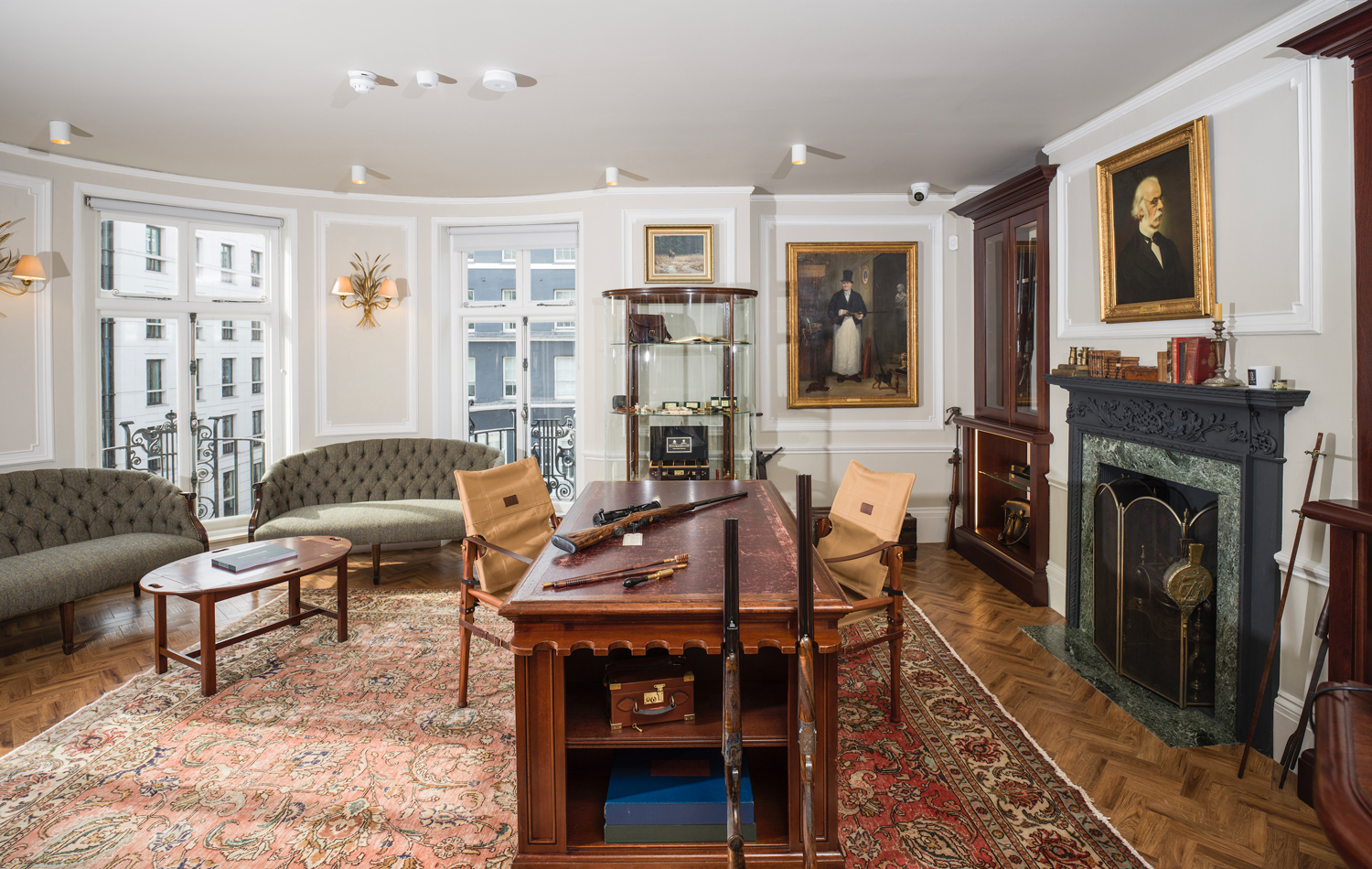
It’s likely the company’s early guns were built to Holland’s specifications by other gunmakers in the trade, bearing only the inscription H. Holland without an address. Exactly when Holland began manufacturing his own guns is not known, but it is estimated to have been sometime in the 1850s.
In 1861, Holland invited his nephew, Henry Holland, to join the company. Henry served a gunmaking apprenticeship, excelling at the craft and was made a full partner with his uncle in 1876. The company’s name was changed to Holland & Holland and, by 1883, H&H dominated the trials organized by the magazine The Field, sweeping the rifle categories to set new standards of excellence for competition among English gunmakers. During that time, Henry was responsible for securing 47 firearms-related patents for Holland & Holland.
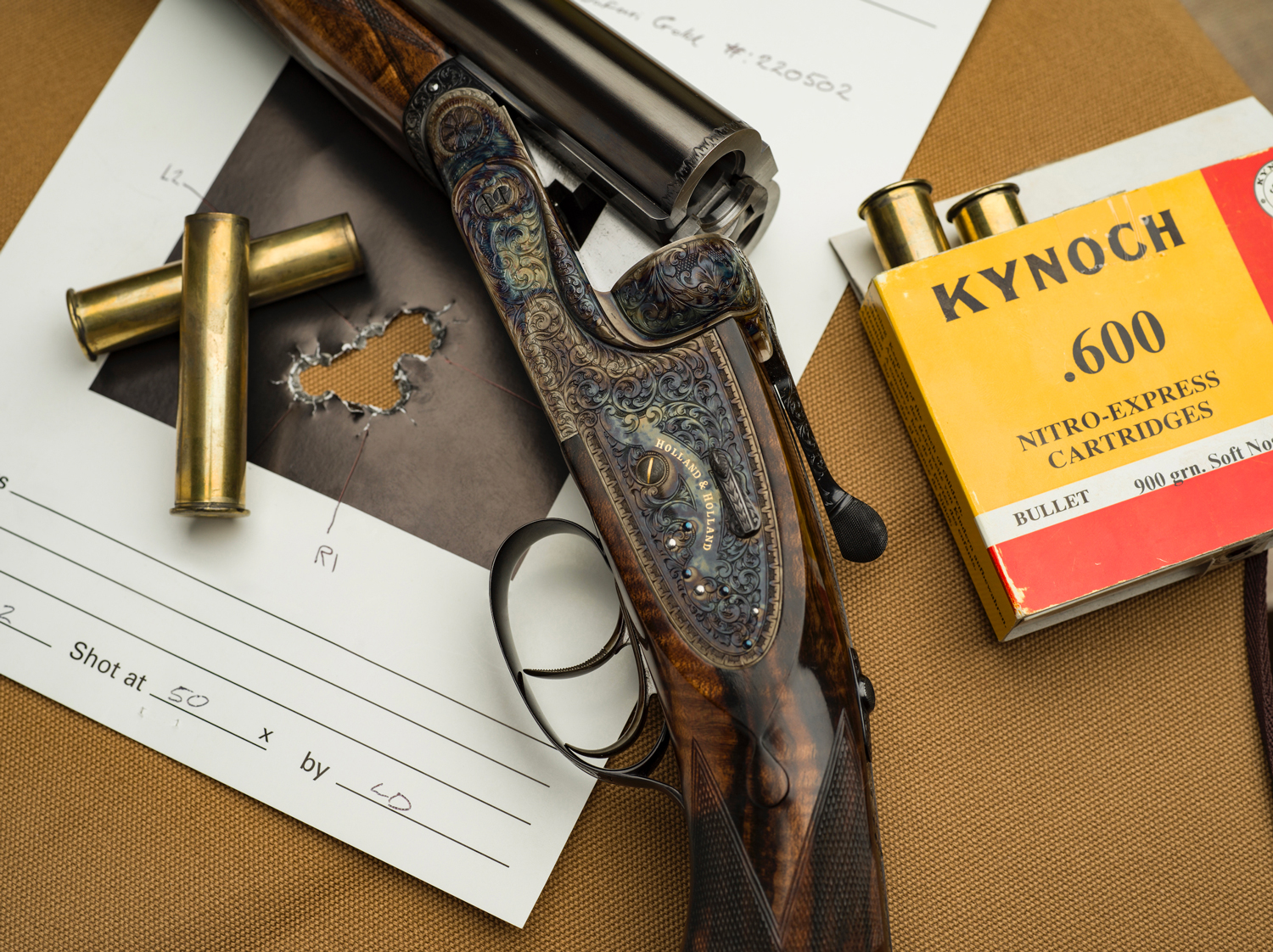
“The Royal”
The crowning achievement of the partnership was production of the side-by-side sidelock firearm called “The Royal,” which applied to both shotguns and rifles. Initially, the Royal entailed an asymmetrical design that had one lock cocked on opening and the other upon closing. This tended to promote some weakness on one side or the other. The problem was resolved by the simple solution of duplicating the right-hand lock. Donald Dallas, writing in Holland & Holland: The Royal Gunmaker, says it was introduced “in the spring of 1885 and has continued in production ever since as the flagship of Holland & Holland.”
That same year, the trademark “The Royal” was granted, as well as Holland & Holland receiving patents for its Paradox gun, a shotgun with rifling in the front two inches of the barrel. By the latter part of the 1880s, the success of Holland & Holland was such that they were selling an average of 400 shotguns and rifles a year—likely the largest trade in sporting guns in Britain.
In 1908, H&H patented the detachable lock feature with a small lever for sidelock shotguns. The last major development in the evolution of the side-by-side, sidelock gun occurred in 1922 when H&H patented an assisted-opening mechanism. Holland & Holland’s Royal, incorporating nearly a century’s worth of improvements, became the classic “London Best Gun,” a design that has been copied but never bettered by gunmakers around the world. With a rock solid sidelock mechanism, reliable ejectors and a self-opening mechanism, the Royal Game Gun was not only elegant, but accurate and fast in the field. An H&H Royal was one of the best bespoke guns to own and was considered the ultimate firearm tailored to each individual shooter.
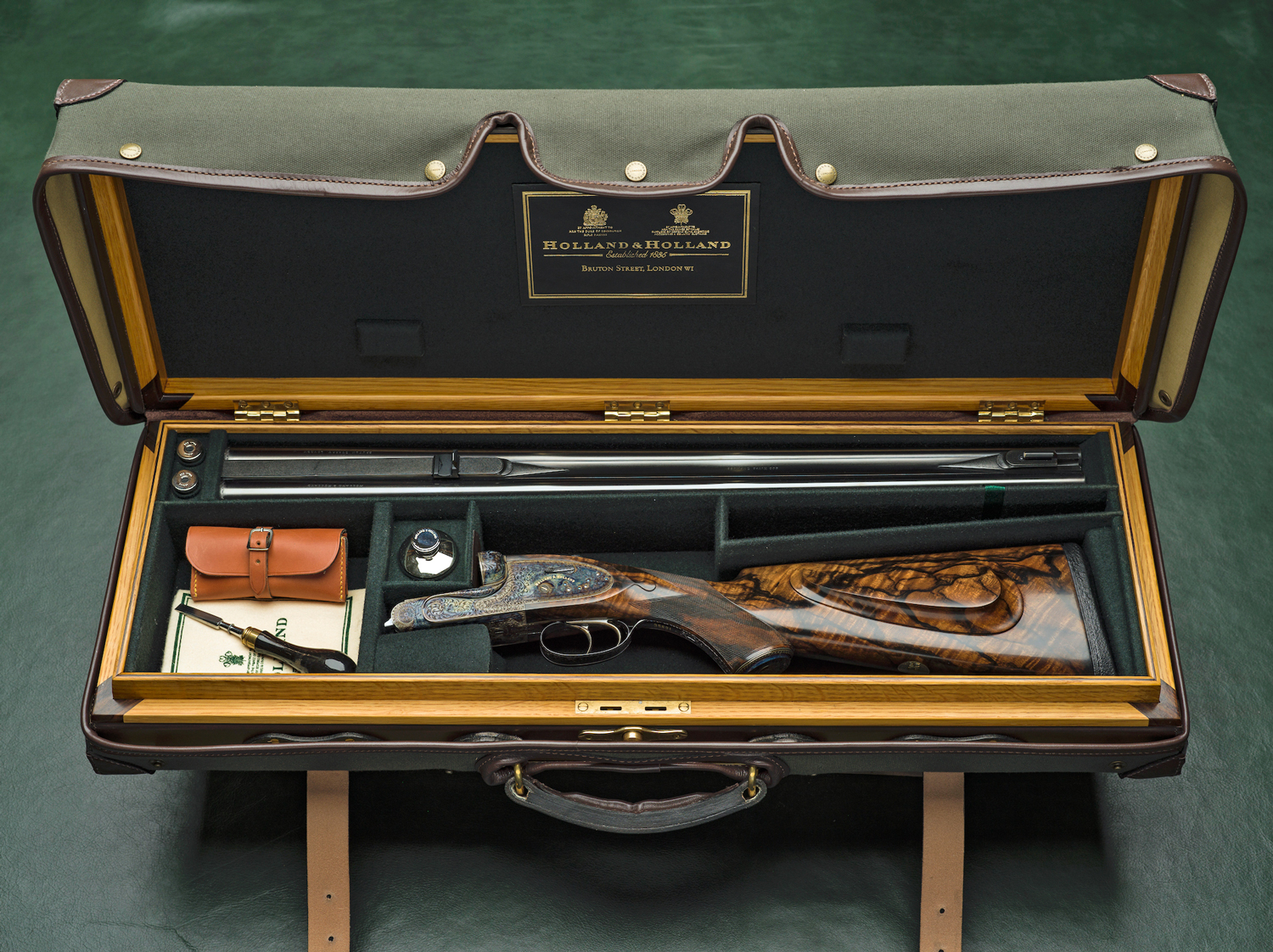
A Holland &Holland Royal double rifle, featuring color case-hardened sidelocks with scroll-engraving and beautifully-figured, top-grade Turkish walnut stock, is housed in a felt-lined, high quality oak and leather gun case that is protected by a leather-trimmed green canvas outer cover.
Each Royal gun features individually regulated chopper-lump barrels and a time-proven sidelock mechanism, bolts and ejectors and a front trigger that’s articulated to help prevent finger bruising. The reinforced action incorporated locks at the back of the action to create a solid bar, adding weight and rigidity where it is most needed, and a patented ejector system that is not only simple, but exceptionally reliable. The Royal double rifle, designed for close work when the next shot might mean the difference between life and death, was available in any rimless, flanged or belted chambering.
In the 1930s, Holland & Holland introduced the Dominion-grade guns in both shotgun and double rifle formats. The name refers to the British Dominions, which included countries such as South Africa, Australia, New Zealand and Newfoundland—remote areas where the guns needed to withstand rugged conditions and where reliability was crucial. In keeping with their workhorse reputations, the Dominion guns did not need nor include elaborate engraving or fancy stocks. As such, they were offered at more affordable prices than the best Royal models offered by the company. .
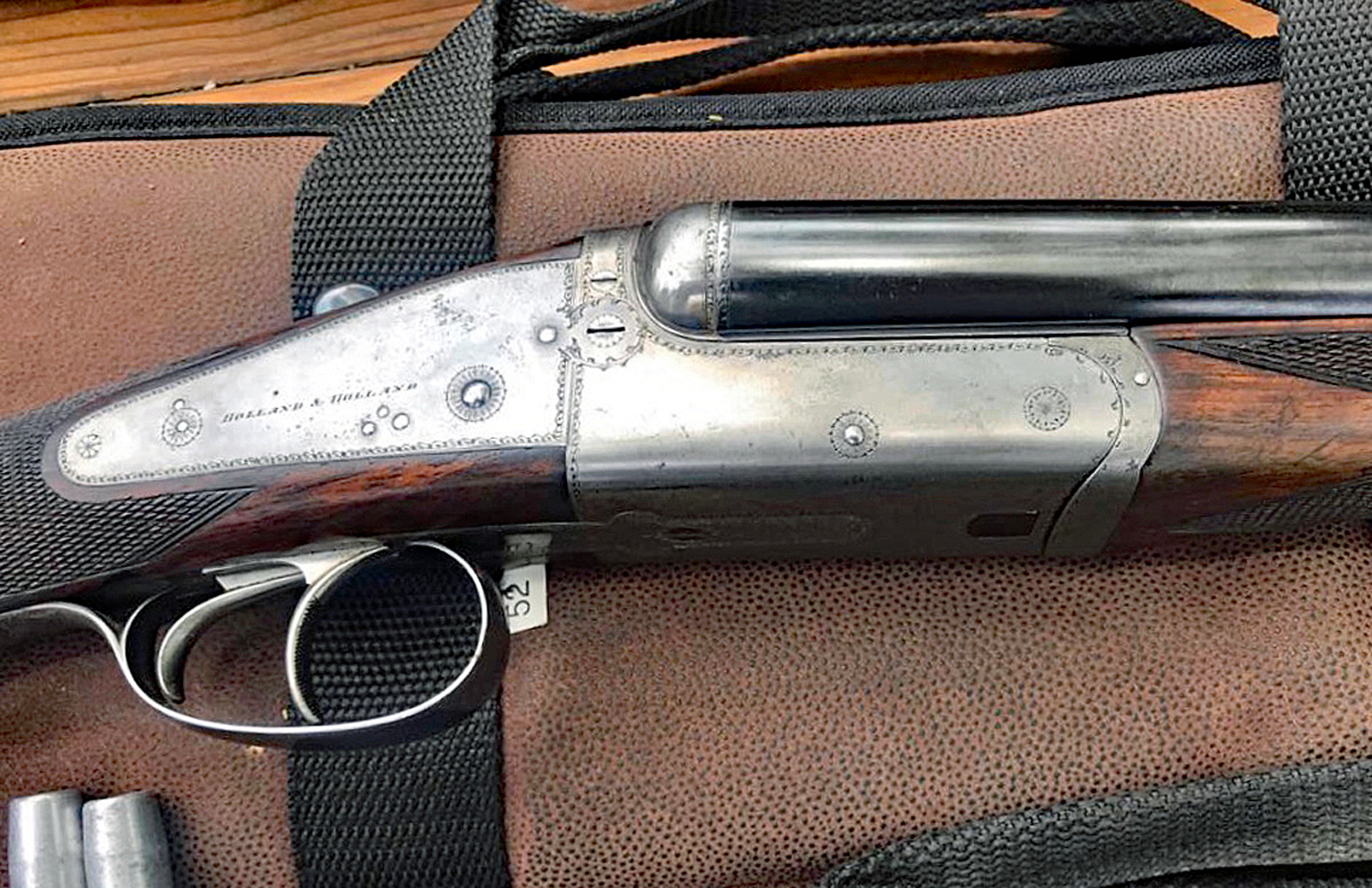
Dominion guns appealed to a broader customer base consisting mainly of administrators, military officers and sportsmen, many of whom lived and worked overseas. Many Dominions, featuring a distinctive style and function with robust, swept back, slightly dipped, back-action locks, are still in regular use today. This is certainly a testament to the strength of the design as the name Dominion suggests.
Holland & Holland Post WW II
Following World War II, and after more than 125 years of ownership, the Holland family relinquished their controlling interest in the company. Under the leadership of new owner and managing director, Malcolm Lyell, the company traveled to India to locate and buy guns from the famous collections of the princes and maharajahs, developing an important market for pre-owned guns bought by second owners. The 1950s and ’60s were reasonably profitable for the company, but times were changing with ammo availability for double guns becoming scarce and the introduction of more economic big-bore magazine rifles and ammo suitable for big game gaining momentum.
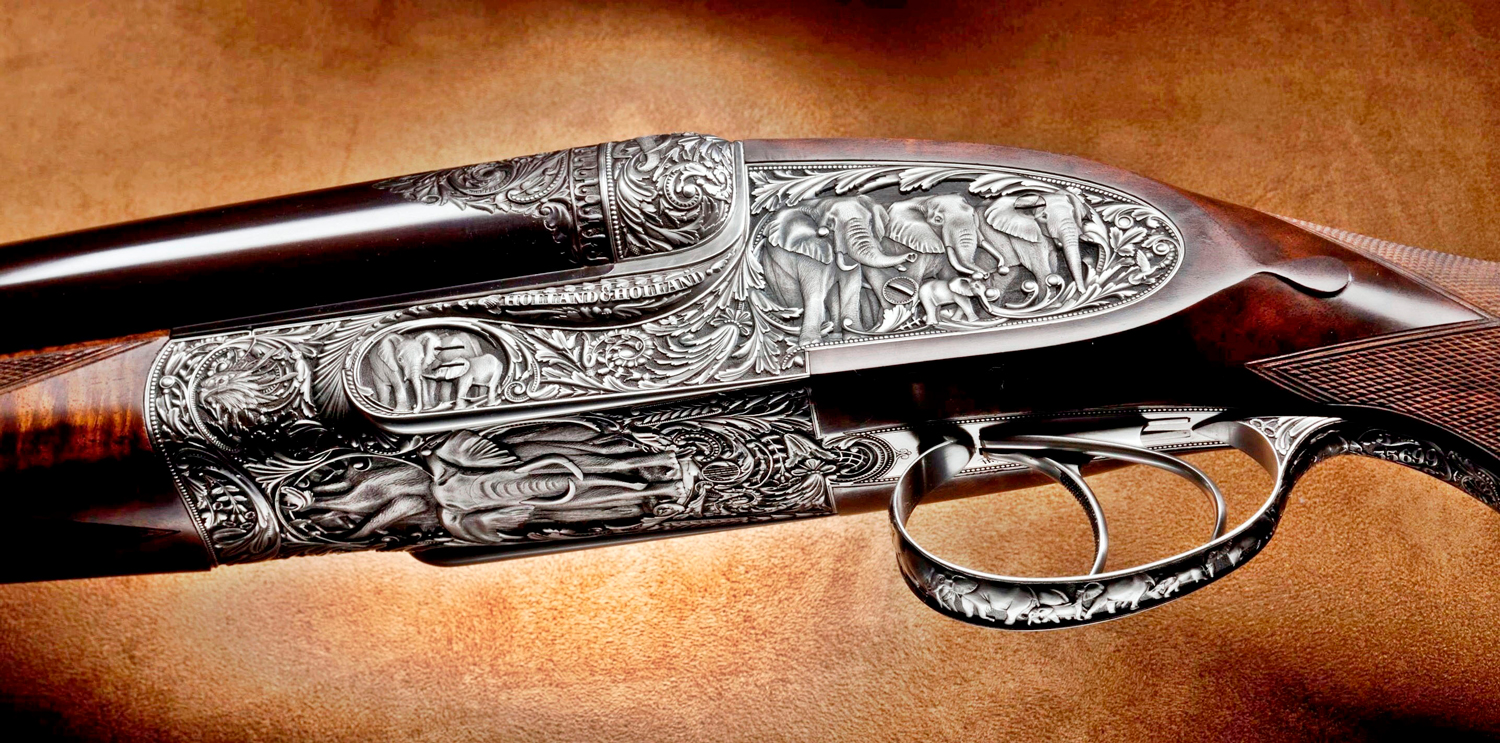
Extraordinary deep-relief engraving by world-renowned master engraver Philipe Grifnee depicts more than 20 elephants adorning this 700 NE—part of publishing magnate Robert E. Petersen’s estate that was donated to the NRA National firearms Museum.
In 1989, all remaining shares in H&H were bought by the French luxury group, Chanel. The original factory building, in use from 1898, was renovated and equipped with modern technology. During Chanel’s reign, naysayers claimed that sales of high-end shotguns and rifles had seen better days and were in a slump. Some pointed out that a generation of significant collectors was fading away with their collections flooding the market and reducing prices and values. Others felt that the Holland & Holland name meant little to those outside of the shooting world.
In spite of this pessimism, Chanel poured money into modernizing the production facilities on Harrow Road, including an investment in computers and CNC machinery to the tune of millions of dollars. Guns such as the Royal over & under and side-by-side guns were improved and reintroduced, becoming available from 4-bore to .360 inch. Back then, a hand-built gun from H&H could cost around $75,000 for a shotgun and approaching $120,000 for some rifles, with prices roughly doubling with elaborate engraving. The waiting period was two to three years between ordering and delivery. But sales continued declining and, during this time, the company’s London flagship store, for many years located at 33 Bruton Street, was closed, as was the gunroom in New York City.
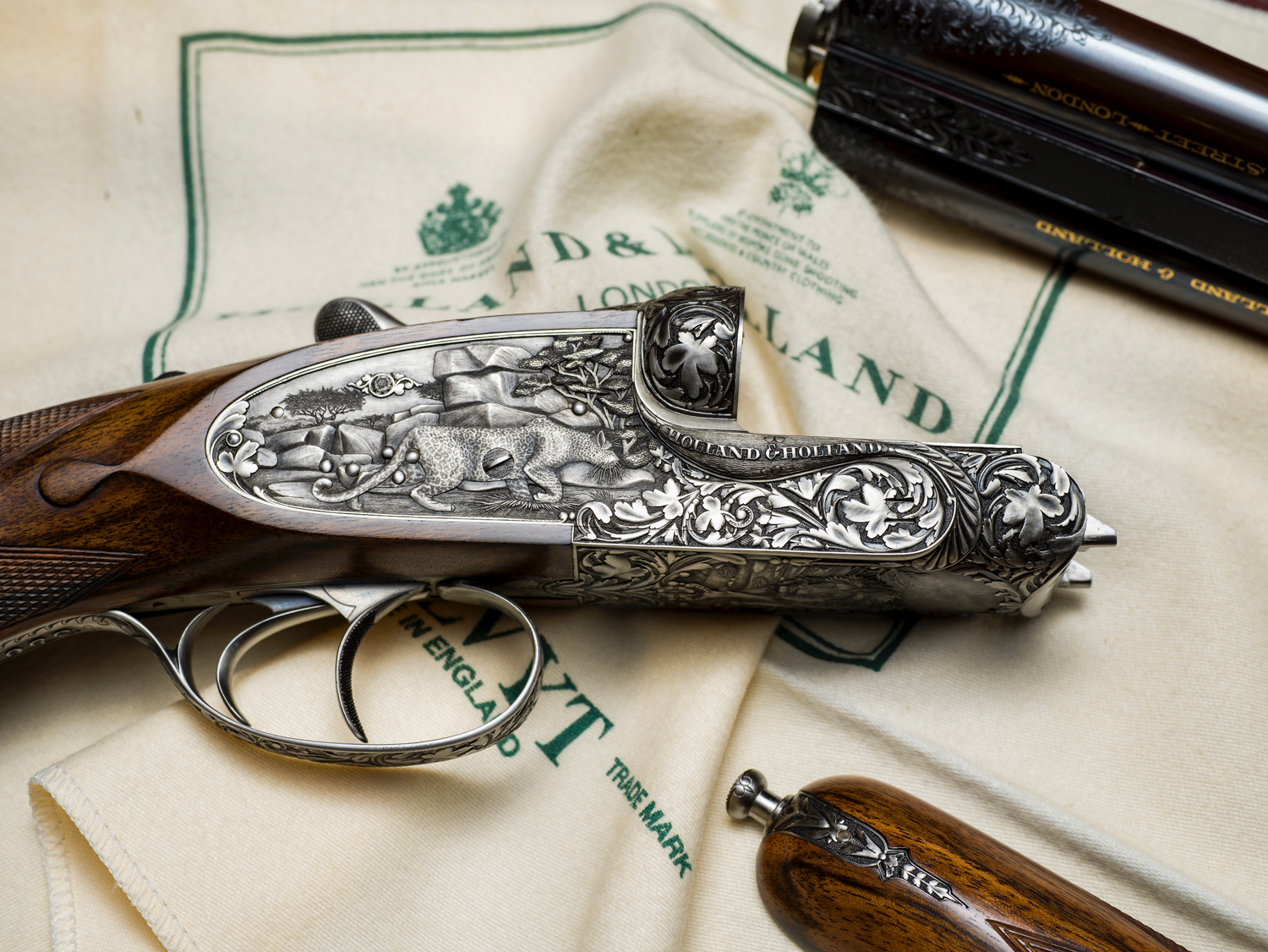
The hand engraving on a Holland & Holland Royal double gun is the celebration of an ancient art. Deep foliate scrolls and game scenes enhance the appearance of the action and locks.
Looking Ahead
In 2004, rumors began to circulate that Holland & Holland was once again up for sale, but it would take nearly 20 years before a final deal could be made with the Beretta Holding Group. Headquartered in Gardone Val Trompia near Brescia, Italy, Beretta Holding is an Italian holding company for the industrial group that holds direct or indirect participation in more than 30 companies. With its centuries-old history and background, Beretta clearly knows more about guns and corporate survival in a changing environment than any other company in the world. At the same time, Beretta has a deep-rooted respect for Holland & Holland’s history that it, along with the London company, is proud to protect.
There is little doubt that Beretta plans for Holland & Holland to remain London’s premier gunmaker, with all of its shotguns and rifles manufactured and assembled in their entirety in England at the London factory. Being part of the Beretta Group gives Holland & Holland the opportunity to collaborate with partners within the group to innovate and share knowledge. This is clearly an advantage over the competition, as Holland & Holland continues investing in a team of talented craftsmen and apprentices to ensure a long-term continuity of gunmaking skills.
Holland & Holland’s new tagline, “Perfecting the art of shooting since 1835,” incorporates not only the pursuit of perfection in gunmaking and craftsmanship, but also the skill and art of shooting and hunting itself. This is consistent with the world-class instruction and service that H&H provides at its shooting grounds, which also includes locally sourced game recipes served at the shooting grounds’ exclusive restaurant.
Today, Holland & Holland’s new London flagship gunroom is located on St. James Street and is available for visits by appointment during business hours throughout the week. The company’s U.S. gunroom is located at University Park, Dallas, Texas, where a selection of new and pre-owned shotguns and rifles are displayed, as well as leather goods and gun accessories. The new gunrooms enable H&H to offer customers truly personal service that includes gunsmithing services, gun fitting, valuations and histories in a perfect setting that reflects the splendor and richness for which the name Holland & Holland is known. Holland & Holland plans to build on its position of prestige within the field sports in preparation for the company’s next chapter as it looks forward to its 200th anniversary in 2035.
Holland & Holland’s Future
The whole ethos of Holland & Holland is based around its tagline, “Perfecting the art of shooting since 1835.” The company is currently implementing a 10-year product strategy that includes hosting VIP events in the U.S. in support of new introductions and a re-launch of a hunting clothing and accessories line.
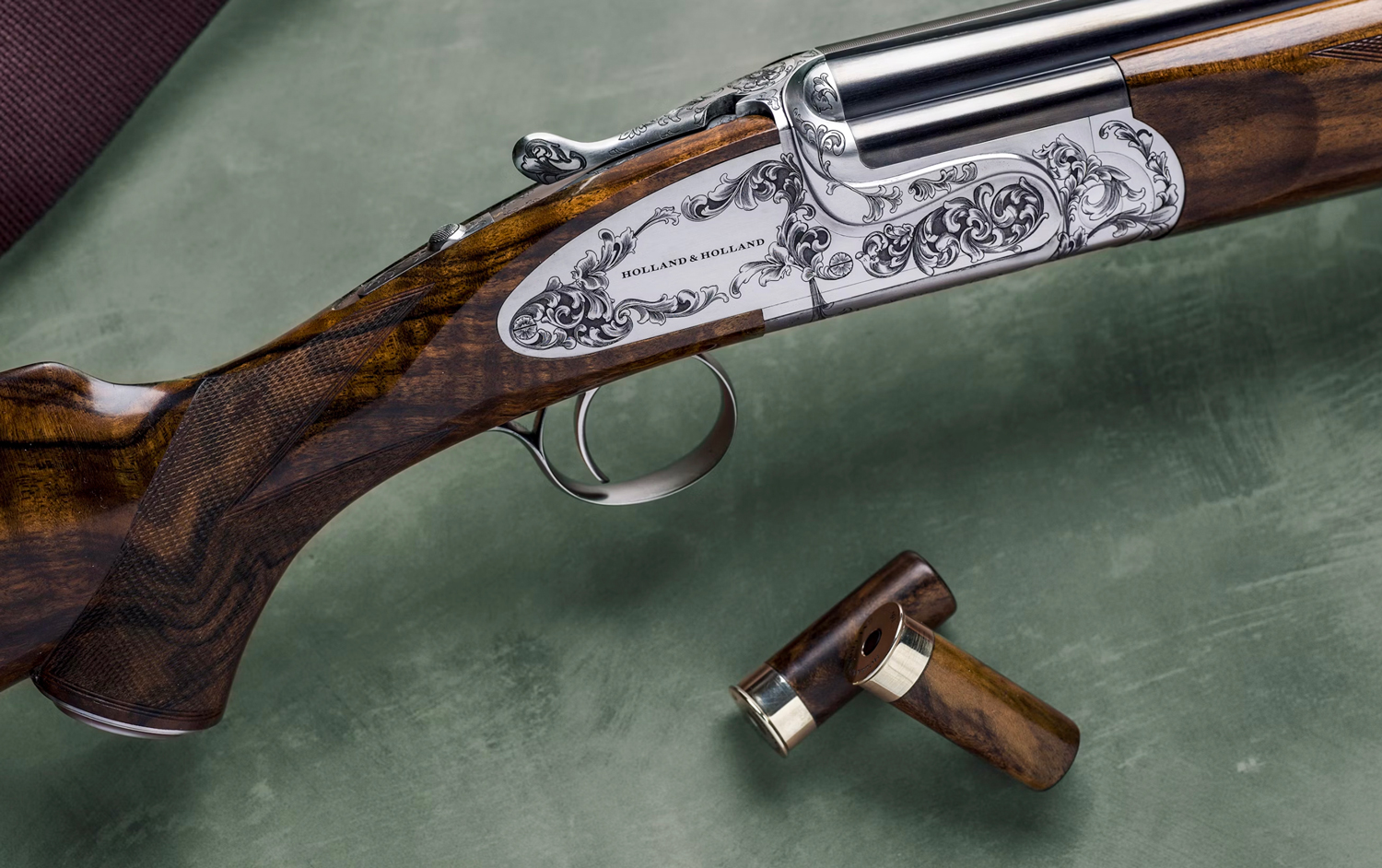
Holland & Holland’s latest shotgun introduction is the “Noble,” a steel shot-proofed over & under with a non-detachable trigger block, a bolstered action with sideplates, a single trigger and laser engraving. The lock work is a ‘V’ spring-operated, trigger-plate system. The Noble weighs 7 pounds 11 ounces and features an elegant oil-finished stock with a gracefully angled pistol grip and steel grip cap.
Beyond building fine shotguns and rifles and best-in-class clothing and accessories, Holland & Holland’s aim, along with its Beretta Group partners, is to initiate innovative ammunition solutions, grow brand partner networks and deliver the very best in customer service with a dedicated team of specialists.
In addition to Holland & Holland, Beretta Holding also owns Italian gunmakers Benelli, Franchi and Uberti along with Finnish rifle brands Sako and Tikka. Also included in the portfolio is Stoeger and the ammunition company, Norma USA as well as more than 30 manufacturers in the gun, ammo and optics industries.

